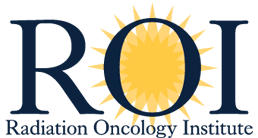Ming Chao, PhD, and Jose Penagaricano, MD
Preventing Toxicities through Improved Predictive Models
Ming Chao, PhD, of the Icahn School of Medicine at Mount Sinai, and Jose Penagaricano, MD, of the H. Lee Moffitt Cancer Center and Research Institute are collaborating to use big data analytics powered by artificial intelligence to build better tools to predict radiotherapy induced toxicity. The team has developed an innovative spatial cluster model based on percolation theory, one of the simplest probability models that predicts cluster formation in random networks. Their preliminary research shows that this new approach could be superior to current methods for predicting and preventing toxicity in head and neck cancer.
Patients with cancer being treated with radiotherapy can experience side effects or toxicities, which primarily result from radiation affecting normal tissues surrounding the tumor. Dry mouth or xerostomia is a common side effect of radiotherapy in patients with head and neck cancer that occurs when affected salivary glands do not make enough saliva. “The best way to try to manage toxicities like xerostomia is to prevent them from happening,” says Dr. Chao. “Our cluster model incorporates the spatial information of radiation dose in the salivary glands which is key to understand the local dose effect on xerostomia. Machine learning approaches built with this model allow us to derive the underlying correlation between radiation dose and toxicity and subsequently establish an effective model for xerostomia prediction.” Dr. Penagaricano adds, “The big data analytics is truly necessary in studying this complicated problem. This method better accounts for the difference in dose effects as well as diversity among patients. The successful completion of the research will allow for more personalized treatment plans that reduce or even prevent the treatment associated toxicity.”
With support from ROI, Dr. Chao and Dr. Penagaricano are:
- Using treatment planning data from both of their institutions to investigate spatial dose distribution and identify features associated with xerostomia at different time points.
- Developing and validating the optimal predictive model for xerostomia based on machine learning/artificial intelligence.
- Creating an easy-to-use xerostomia predictive tool to assist clinicians in decision making during radiotherapy planning for head and neck cancer.
Through this study, Dr. Chao and Dr. Penagaricano are working to improve cancer care by developing a better predictive model that is understandable and accessible to all radiation oncology clinicians regardless of their computational background. Their novel decision-making tool could enhance quality of life for patients with head and neck cancer by reducing or preventing xerostomia. The spatial cluster model has the potential be tailored for predicting toxicities in other organ systems and could conceivably be used to optimize treatment planning for more cancer patients in the future.
Presentations
- Voxel Based Analysis of Local Dose Patterns on Radiation Induced Xerostomia in Head and Neck Cancer with Machine Learning Methods was presented at the 2023 ASTRO Annual Meeting.
- Extracting Feature Predictors for Radiation Pneumonitis Incidence in Locally Advanced NSCLC Radiotherapy with Explainable Machine Learning Models was presented at the 2023 AAPM Annual Meeting.














